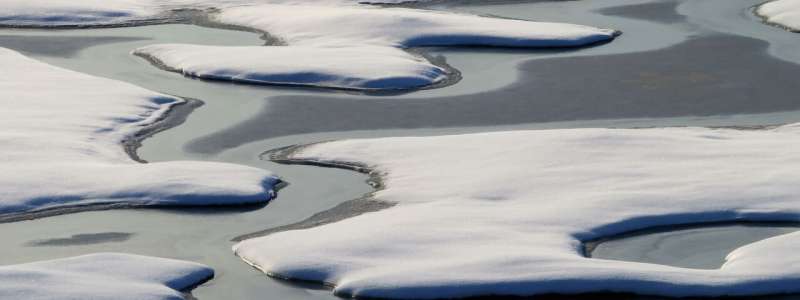Variations in precipitation at the North Pole set to increase sharply

The climate is warming, especially in the Arctic, which will bring increased precipitation. However, the year-to-year variations in precipitation will also increase sharply, it has been found, and for a totally different reason than the average increase in Arctic precipitation. This is the conclusion of TU Delft researcher Jesse Reusen and colleagues from the KNMI and the universities of Wageningen and Groningen in an article in Science Advances on Wednesday 12 February.
As a master's student, Jesse Reusen, currently a Ph.D. candidate at TU Delft, was involved in this research at the Royal Netherlands Meteorological Institute (KNMI). "For my Master's thesis, I looked at temperature fluctuations in simulations of warm and cold climates, and with higher or lower CO2 values. We have now applied the method I used in a similar manner to analyze precipitation."
Year-to-year fluctuations have enormous significance for extremes in weather and climate, and consequently for the effects of climate change. Generally, a particularly wet/dry/cold/warm year has more far-reaching repercussions than a succession of 'normal' years. In the Arctic, all climate changes, including those in variability, are far greater than in the rest of the world. The possible consequences of this will be felt in the Arctic as well in more temperate latitudes.
The article in Science Advances uses the latest climate models to show that future fluctuations in precipitation at the North Pole will increase sharply, and that this is caused by atmospheric moisture transport to the Arctic. This is in sharp contrast to the increase in average precipitation, which is mainly the result of increased evaporation and decrease in sea ice in the Arctic itself. It is striking that changes in average precipitation are determined by local processes, while the increases in fluctuations are driven by atmospheric processes originating at lower latitudes.
Based on these results, we may conclude that wet years in the Arctic will become much wetter in the future, and that this is not only caused by the average increase in precipitation but to a large degree also by the sharp increase in year-to-year variations. Moreover, future changes in climate variability are less certain than changes in the average climate. While almost all climate models show an increase in precipitation variability in the Arctic, the extent of this increase depends very much on the model used.
More information: R. Bintanja et al. Strong future increases in Arctic precipitation variability linked to poleward moisture transport, Science Advances (2020). DOI: 10.1126/sciadv.aax6869
Journal information: Science Advances
Provided by Delft University of Technology




















